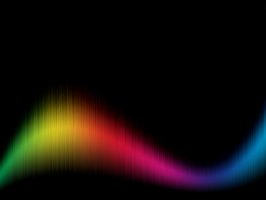OPPORTUNITY
The hustle and bustle of modern society is often intertwined – whether intentionally or unintentionally – with radio-frequency (RF) emissions. Individuals, vehicles, and equipment leave behind electromagnetic signatures that, upon capture and analysis, can reveal hidden patterns, unknown behaviours and illicit activities. RF analytics deals with the extraction of information from these emissions.
The last few years have seen the start of new developments on the commercialisation of space-based RF analytics, with a number of entities commercialising or in the process to commercialise space-based RF analytics datasets.
With this new opportunity, ESA aims to support the development of innovative space-based services on the analytics of RF signals collected from space.
Key focus areas
- Maritime Safety
- Air Traffic
- Natural Resources Protection and Management
- Spectrum Management Sector
- Humanitarian/Disaster Relief
- Law Enforcement
THE VALUE OF SPACE
The number of downstream applications which could be enabled by the detection and analysis of RF signals from space is wide-ranging and cuts across multiple user segments. RF signals from the following sources could be targeted: maritime VHF transceivers, personal transceivers, satellite phones, maritime and airplane radars, cellular towers, GNSS Electromagnetic interferences, emergency beacons, ADS-B signals, etc.
Other space technologies and data could play a complementary role:
Satellite Earth Observation (EO):
- Data derived from optical and SAR satellites could be used as complimentary datasets (data fusion).
Satellite Navigation (SatNav):
- Satellite navigation is essential for the geolocation of the emitters, as both positioning and timing of the satellites must be known at very high precision.
- RF analytics applications can contribute to protect GNSS bands from interferences and jammers.
Satellite Communication (SatCom):
- Satellite and terrestrial based Automatic Identification System (AIS) datasets could be fused with RF Analytics datasets for an enhanced maritime situational awareness.
- RF Analytics applications can contribute to protect SatCom bands from interferences.
WHAT WE OFFER
ESA Space Solutions offer funding and support to companies for investigating the technical feasibility and economic viability of space-based RF analytics applications and defining a roadmap for services implementation and demonstration.
The activities will be 100% funded up to €200K per activity.
WHAT ARE WE LOOKING FOR?
We’re looking for teams that have identified an attractive market opportunity with real potential for engaging customers Motivation, business experience and domain expertise are all important features. We want to hear about your ideas for developing commercially viable, technically feasible business ideas that involve space-based RF analytics.
For this call, companies residing in the following Member States will be eligible to apply: AT, BE, CH, CZ, DE, DK, EE, ES, FI, FR, HU, IE, IT, LU, NL, NO, PL, PT, RO, SE .
ESA TENDER INFORMATION
Responding to an open competitive Invitation to Tender (ITT) requires the submission of a Proposal. The Proposal will be evaluated according to ESA regulations and procedures.
The consequential evaluation of proposals results in a recommendation for a winning bid. In the case that several proposals of good quality targeting different and/or complementary aspects are submitted, the Agency reserves the right to place parallel contracts for each of the open competitive ITTs in coordination with the relevant national delegations.
For the fully detailed Proposal Guide on competitive ITTs click: Open Competition.
REGISTRATION AS BIDDER
The Prime and all subcontractors must register as potential bidders via esa-star. The registration process needs to be started as soon as possible, as it will take time to complete.
WEBINAR
- 11:00 CEST, 30 June 2021




